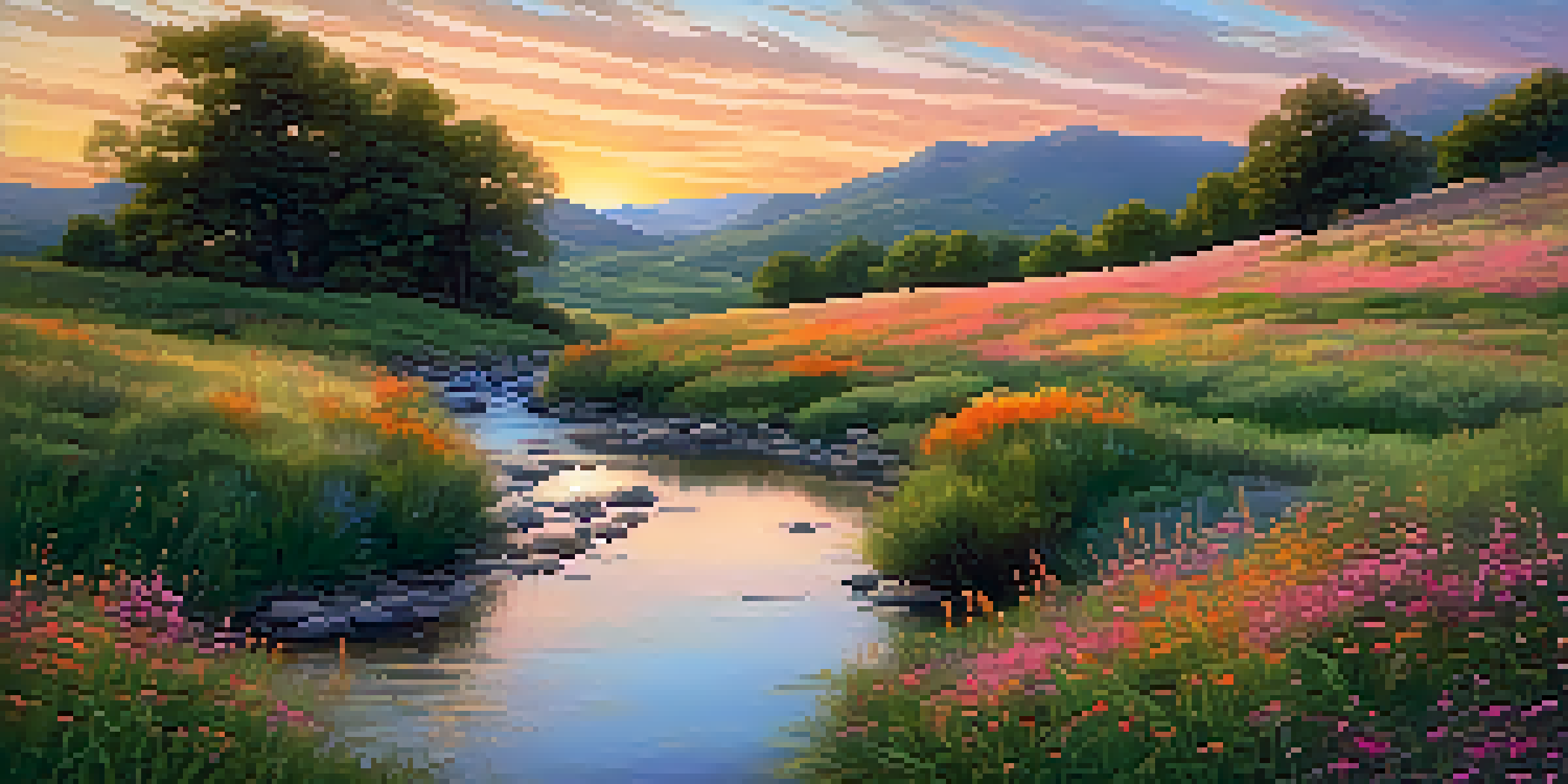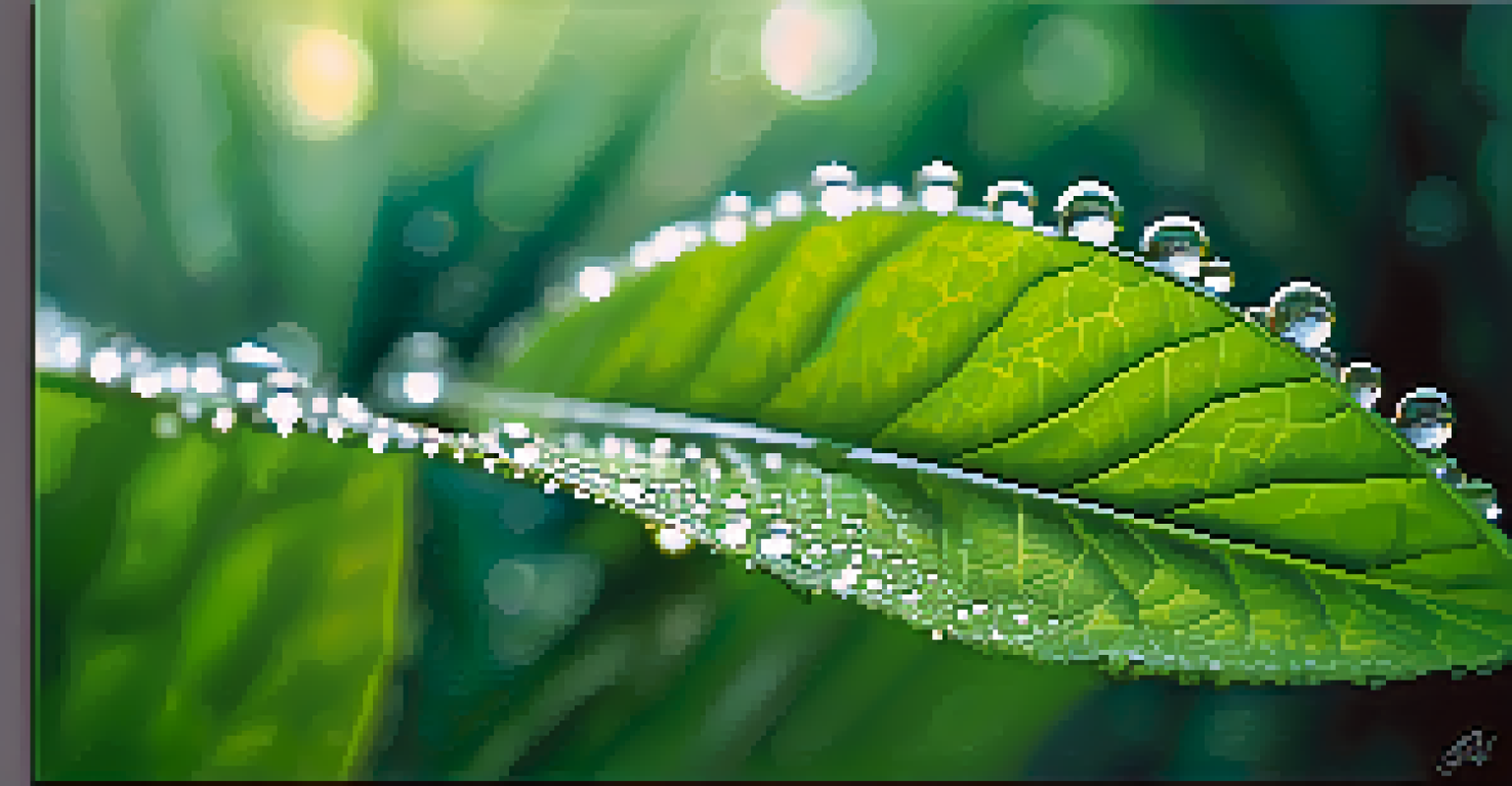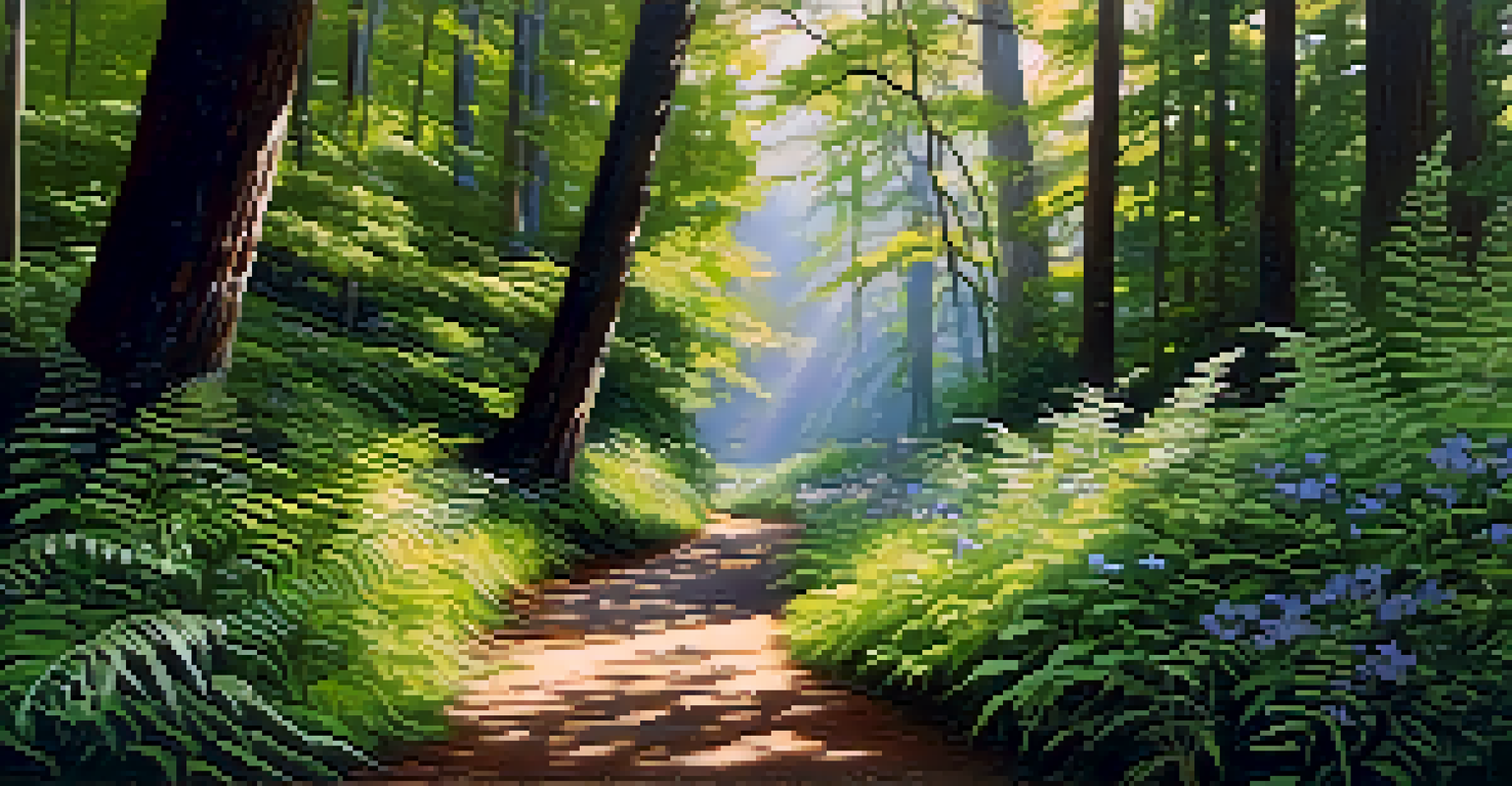Photography Tips: Capturing Nature's Beauty Outdoors

Choose the Right Time for Outdoor Photography
Timing is everything in photography, especially when it comes to capturing nature. The golden hours—just after sunrise and before sunset—offer the best light, creating beautiful, soft shadows and vibrant colors. During these times, the sun's angle is low, which enhances the natural beauty of landscapes and subjects.
Photography is the story I fail to put into words.
Midday light can be harsh and unflattering, leading to overexposed highlights and stark shadows. If you must shoot during this time, look for shaded areas or try to capture subjects that can benefit from the bright light, like flowers in full bloom. Understanding how light changes throughout the day will help you plan your shoots more effectively.
Additionally, keep an eye on the weather. Overcast days can provide even lighting for capturing intricate details, while clear skies can create dramatic landscapes. Being flexible with your schedule will allow you to seize the perfect photographic opportunities.
Composition Techniques for Stunning Nature Shots
Good composition can turn an ordinary photo into an extraordinary one. One popular technique is the rule of thirds, which involves dividing your frame into a 3x3 grid. Placing your subject along these lines or at their intersections can create a more balanced and engaging image.

Leading lines are another effective way to draw viewers’ eyes into your photograph. Whether it’s a winding path, a river, or rows of trees, these lines guide the viewer’s gaze and add depth to your shot. Experimenting with different angles can reveal new perspectives and compositions.
Timing Matters in Photography
Capturing nature at golden hours enhances the beauty of your images with soft lighting and vibrant colors.
Don't forget to include foreground elements to add context and depth. This technique can make your landscapes feel more immersive. By layering your image with elements in the foreground, midground, and background, you create a more dynamic and interesting photograph.
Utilize Natural Frames for Enhanced Focus
Using natural frames can beautifully emphasize your subject and draw attention to it. Elements like tree branches, arches, or even rock formations can create a frame within your photo. This technique adds depth and context, making your subject stand out even more.
The best camera is the one you have with you.
When composing your shot, look for these natural frames in your surroundings. They can help guide the viewer's eye straight to your main subject. Over time, you’ll develop an instinct for spotting these opportunities as you explore different landscapes.
Remember, framing isn’t just about the physical elements; it’s also about the emotional connection you create. A well-framed photo not only highlights the beauty of nature but also tells a story, inviting viewers to engage with the scene on a deeper level.
Mastering Exposure Settings for Nature Photography
Understanding exposure settings is crucial for capturing the essence of nature. The three components—aperture, shutter speed, and ISO—work together to determine how light interacts with your camera. A wide aperture (low f-stop) creates a shallow depth of field, beautifully blurring backgrounds and isolating your subject.
Shutter speed is equally important, especially in nature photography where movement is common. A fast shutter speed can freeze a bird in flight, while a slower speed can create a dreamy effect with flowing water. Experimenting with different settings will help you discover what works best for your style.
Composition Enhances Impact
Utilizing techniques like the rule of thirds and natural frames can transform ordinary shots into stunning photographs.
Lastly, don't overlook ISO settings. In low-light situations, increasing your ISO can help you achieve the right exposure, but be cautious as it can introduce noise into your images. Finding the right balance between these settings is key to mastering outdoor photography.
Incorporating the Elements of Nature in Your Shots
Nature is full of elements that can enhance your photography, from the textures of bark and leaves to the colors of flowers and skies. Incorporating these elements into your shots can add richness and detail, making your photographs more captivating. Look for interesting patterns or contrasts that can tell a story.
Weather can also play a significant role in your photos. A stormy sky can add drama to a landscape, while a clear blue backdrop can evoke a sense of calm. Be open to capturing various weather conditions, as they can dramatically alter the mood of your images.
Additionally, consider the changing seasons. Each season offers unique colors and light, creating endless opportunities for stunning photography. Embracing the diversity of nature will help you develop your skills and expand your creative horizons.
Patience: The Key to Capturing Wildlife Photography
When it comes to wildlife photography, patience is essential. Animals often have their own schedules and behaviors, and waiting for the perfect moment can lead to breathtaking shots. Spend time observing your surroundings, and be ready to capture spontaneous moments as they unfold.
Consider using a telephoto lens to get close-up shots without disturbing wildlife. This allows you to maintain a respectful distance while still capturing incredible details. Remember, it’s important to prioritize the comfort and safety of the animals you’re photographing.
Patience is Key for Wildlife Shots
Observing animal behaviors and using a telephoto lens can lead to breathtaking wildlife photography opportunities.
Additionally, learning about the habits of the wildlife in your area can give you an advantage. Understanding when and where animals are likely to be active can help you plan your shoots more effectively, increasing your chances of capturing that perfect shot.
Editing Your Nature Photos for Impact
Post-processing is a powerful tool that can enhance your nature photography. Software like Adobe Lightroom or Photoshop allows you to adjust exposure, contrast, color balance, and sharpness, bringing your images to life. A little editing can transform a good photo into a great one, highlighting the beauty of what you captured.
However, it’s essential to maintain a balance. Over-editing can make your photos look unnatural. Aim for enhancements that retain the authenticity of the scene while making the colors and details pop. Subtle adjustments often yield the best results.

Consider developing a consistent editing style that reflects your personal aesthetic. This not only enhances your portfolio but also creates a recognizable brand for your photography. With practice, you’ll find a workflow that suits your creative vision.